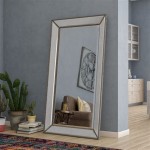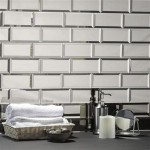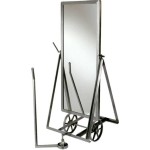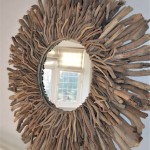Do Mirrors Invert Images?
The concept of mirrors flipping images is a common misconception that many people hold. While it is true that mirrors appear to reverse images, they don't actually invert them in the way that we often think. This article will delve into the science behind how mirrors reflect light and why they create the illusion of image reversal.
The Nature of Reflection
Mirrors are smooth, reflective surfaces that work by reflecting light. When light strikes a mirror, it bounces back at an angle equal to the angle at which it hit the surface. This principle is known as the law of reflection. It's this reflection that allows us to see our own image in the mirror.
The way light reflects off a mirror is crucial to understanding how images appear. When light from an object strikes the mirror, it reflects and enters our eyes, creating a virtual image of the object. This virtual image appears to be behind the mirror, but it's not a real image, as it's just a result of how our brains interpret the reflected light.
Lateral Inversion, Not Vertical Inversion
The common misconception about mirrors inverting images stems from the fact that they appear to flip our left and right sides. This is known as lateral inversion, not vertical inversion. The reason for this is that the reflection process doesn't flip the image vertically. Instead, it reverses the image along a plane perpendicular to the mirror's surface.
Imagine a mirror positioned vertically in front of you. As you look at yourself in the mirror, your left side appears on the mirror's right side, and vice versa. This is because the light from your left side is reflected to the right side of the mirror, and vice versa. The image is simply flipped horizontally, not vertically.
The Role of Perspective
The illusion of vertical inversion comes from our own perspective. We tend to perceive the image in the mirror as if it were behind the mirror, rather than just a reflection. This perspective creates the illusion that the image is flipped vertically, but it's just a result of how our brains interpret the information from our eyes.
If you were to hold a piece of paper up to a mirror and look at the reflection closely, you'd notice that the words on the paper aren't vertically inverted. They are simply flipped horizontally. This further demonstrates that mirrors cause lateral inversion, not vertical inversion.
Examples of Lateral Inversion
Lateral inversion is a common phenomenon that we encounter in our everyday lives. For instance, when you write something on a piece of paper and hold it up to a mirror, the writing appears reversed. Similarly, when you see an ambulance approaching in your rearview mirror, the letters "AMBULANCE" appear backwards, as the reflection flips the image.
In the case of the ambulance, this lateral inversion is actually a safety feature. By reversing the letters, it ensures that drivers can read the word correctly even when seeing it in their rearview mirror. This allows other drivers to react appropriately to the approaching ambulance.
Understanding the concept of lateral inversion is important because it helps us to better comprehend how mirrors work and how they affect our perception of images. While it may seem counterintuitive, mirrors don't actually invert images vertically. They simply flip them horizontally, creating the illusion of a flipped image due to our perspective.

Why Do Mirrors Reverse Left And Right Wired
Why Does A Mirror Reverse Things Horizontally But Not Vertically Quora

Do People See You Inverted Your Questions Answered

Laterally Inverted Convex Mirror

Reflection Of Light In A Mirror Lateral Inversion Physics
Why Does A Mirror Reverse Things Horizontally But Not Vertically Quora

Do People See You Inverted Your Questions Answered
Is It Possible To Make A Mirror That Does Not Reverse Left And Right Quora

How Mirrors Work Explain That Stuff

Laterally Inverted








